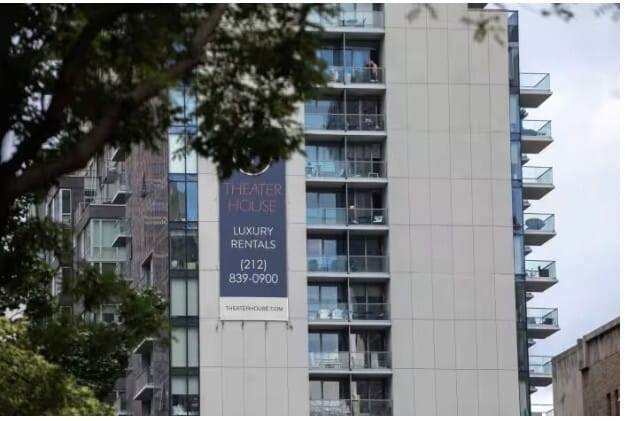- Property Management Brief
- Posts
- Proactive Maintenance & Asset Longevity Strategy
Proactive Maintenance & Asset Longevity Strategy

Good morning!
This week is all about Framework friday and Agentic Ai .We just launched All-in on AI, a community built by Framework Friday for leaders and builders ready to put AI to work. It’s live, it’s growing, and it’s all about real execution—not hype. If you're ready to sharpen your edge and learn alongside others doing the work, jump in here. Let’s go all-in
— Lucas Robinson, Founder & CEO at BudgetMailboxes.com
🎯 This Week’s Strategy:
Proactive Maintenance & Asset Longevity Strategy
🤝 Boardroom Brief:
Apartment Oversupply Fades, Rent Growth Ahead
Strategy
🎯 Proactive Maintenance & Asset Longevity Strategy
Reactive maintenance may get the job done—but it often comes at the cost of higher expenses, reduced tenant satisfaction, and shortened asset life. Proactive Maintenance & Asset Longevity flips the script by focusing on prevention, planning, and precision. When property managers shift from fixing problems to preventing them, they preserve asset value, improve operational efficiency, and deliver a better tenant experience.
By adopting this strategy, property managers can reduce emergency repairs, minimize downtime, and increase ROI over the long term. It’s about seeing maintenance as a strategic investment—not just a cost center.
How Property Managers Can Implement a Proactive Maintenance & Asset Longevity Strategy
1. Conduct a Full Asset Assessment
Start by documenting the condition and lifecycle stage of all major assets—HVAC systems, plumbing, roofing, elevators, etc.
Action Steps:
Create a detailed asset register using digital tools or your property management system (PMS).
Include installation dates, warranties, expected lifespans, and maintenance history.
Use this information to prioritize systems for preventive planning.
2. Develop a Preventive Maintenance Calendar
Scheduling regular inspections and tune-ups helps catch issues before they escalate.
Action Steps:
Build a maintenance calendar by asset type and manufacturer recommendations.
Coordinate with vendors for routine check-ups (e.g., quarterly HVAC inspections, annual roof assessments).
Assign internal checklists for visual inspections and tenant feedback collection.
3. Implement Predictive Maintenance with Smart Tech
IoT devices and analytics can identify wear-and-tear before failure happens.
Action Steps:
Install smart sensors to monitor real-time performance on critical systems.
Use predictive analytics to forecast failures and schedule maintenance at optimal times.
Integrate with your PMS for automatic alerts and work order generation.
4. Train Teams and Vendors on Maintenance Protocols
A proactive system only works if everyone knows how to execute it.
Action Steps:
Standardize inspection and reporting procedures across internal staff and vendors.
Offer training on using digital tools for documentation and flagging potential issues.
Maintain a vendor directory with vetted partners who specialize in long-term asset care.
5. Track and Analyze Maintenance KPIs
You can’t manage what you don’t measure. Use data to refine your strategy over time.
Action Steps:
Monitor metrics such as average response time, maintenance cost per unit, and asset downtime.
Identify patterns in recurring issues and adjust your calendar or vendor contracts accordingly.
Create quarterly maintenance reports for leadership review and strategic planning.
Why It Matters
Proactive maintenance isn’t just about reducing repair bills—it’s about protecting your long-term investment, ensuring tenant satisfaction, and avoiding preventable headaches. In an industry where every dollar and day counts, staying ahead of maintenance needs gives property managers the edge to outperform and outlast the competition.
Join All-in on AI:
The Community for Next-Gen Operators
Scale Smarter. Replace Repetition. | Tired of manual busywork? |
Boardroom Brief
Apartment Oversupply Fades, Rent Growth Ahead

After years of rapid multifamily construction, the apartment oversupply is finally tapering off—completions have dropped 28% since their peak in August. With home prices still high and mortgage rates nearing 7%, renting is once again the more attractive option for many households. This shift is expected to drive steady rent increases—potentially up to 10% annually over the next few years. For property managers, this trend signals an opportunity to revisit pricing strategies, tighten renewal processes, and proactively communicate changes with tenants to maintain occupancy and maximize returns.
Game
🎉 Fun Finale: Play & Poll
What is the name of the deepest known location in the Earth's oceans?(Tap on your answer) |
